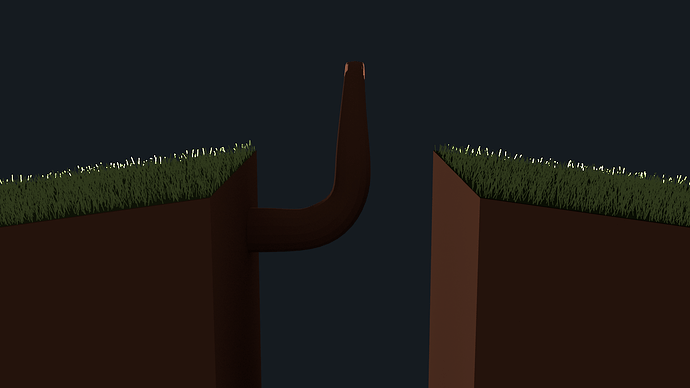Here’s another thought. Have a Wikipedia read on “Zone System” and “Densitometry.”
Now, open your image with an image editor (or with Blender) and use the Histogram tool on it. What you’d like to see is a more or less bell-shaped curve: centering on midtones, some moderate dark tones, but really, nothing that is either “blown out white” or “opaque black.”
Oops…
There is, in fact, a great big black space, right there in the middle of your picture, surrounding what you intend to be the subject (the tree). There’s going to be a huge spike in the curve on the left side. Not good.
Now, it is a fact that the human eye seeks out the brightest and the most contrasty part of anything that it’s looking at. Then, from there, it really wants to trace a roughly circular path and be lead right back to where it started. Do you find your eye doing that? Probably not.
So, generally consider the overall tonal range of the picture. Bring the light in that dark area up. If you were standing next to me in the darkroom, I’d be taking a card with a small hole in it and “burning in” that canyon to bring out the detail that must surely be in there somewhere.
Then, consider what I was saying about the brightest thing and the path. Consider what path you’d like the viewer’s eye to take, to properly take-in the whole scene. Then consider what lighting levels (and shades of color!) ought to be here, and there, in order to achieve that.
You might consider using compositing here. It is very handy, I think, to be able to extract the various sources and types of light so that you can then “mix-down” the image, much the way they do in a multi-track musical recording session. This notion de-emphasizes the goal of trying to “get it all perfecct at once,” and instead breaks down the problem into pieces that can be dealt with (and balanced) separately.
If you do the first render(s) to the MultiLayer file format, you will obtain a tremendous amount of numeric range and precision … “whiter than white, blacker than black” … which might greatly simplify the assembly of such a high-contrast scene. (i.e. “oops, it turned black, but the detail is still there.”)



